第30章 Bush Cats(1)
"Domestic cats" we mean -- the descendants of cats who came from the northern world during the last hundred odd years.
We do not know the name of the vessel in which the first Thomas and his Maria came out to Australia, but we suppose that it was one of the ships of the First Fleet. Most likely Maria had kittens on the voyage -- two lots, perhaps -- the majority of which were buried at sea; and no doubt the disembarkation caused her much maternal anxiety.
. . . . .
The feline race has not altered much in Australia, from a physical point of view -- not yet. The rabbit has developed into something like a cross between a kangaroo and a possum, but the bush has not begun to develop the common cat. She is just as sedate and motherly as the mummy cats of Egypt were, but she takes longer strolls of nights, climbs gum-trees instead of roofs, and hunts stranger vermin than ever came under the observation of her northern ancestors.
Her views have widened. She is mostly thinner than the English farm cat -- which is, they say, on account of eating lizards.
English rats and English mice -- we say "English" because everything which isn't Australian in Australia, IS English (or British) -- English rats and English mice are either rare or non-existent in the bush; but the hut cat has a wider range for game. She is always dragging in things which are unknown in the halls of zoology; ugly, loathsome, crawling abortions which have not been classified yet -- and perhaps could not be.
The Australian zoologist ought to rake up some more dead languages, and then go Out Back with a few bush cats.
The Australian bush cat has a nasty, unpleasant habit of dragging a long, wriggling, horrid, black snake -- she seems to prefer black snakes -- into a room where there are ladies, proudly laying it down in a conspicuous place (usually in front of the exit), and then looking up for approbation. She wonders, perhaps, why the visitors are in such a hurry to leave.
Pussy doesn't approve of live snakes round the place, especially if she has kittens; and if she finds a snake in the vicinity of her progeny -- well, it is bad for that particular serpent.
This brings recollections of a neighbour's cat who went out in the scrub, one midsummer's day, and found a brown snake. Her name -- the cat's name -- was Mary Ann. She got hold of the snake all right, just within an inch of its head; but it got the rest of its length wound round her body and squeezed about eight lives out of her.
She had the presence of mind to keep her hold; but it struck her that she was in a fix, and that if she wanted to save her ninth life, it wouldn't be a bad idea to go home for help. So she started home, snake and all.
The family were at dinner when Mary Ann came in, and, although she stood on an open part of the floor, no one noticed her for a while.
She couldn't ask for help, for her mouth was too full of snake.
By-and-bye one of the girls glanced round, and then went over the table, with a shriek, and out of the back door. The room was cleared very quickly.
The eldest boy got a long-handled shovel, and in another second would have killed more cat than snake; but his father interfered.
The father was a shearer, and Mary Ann was a favourite cat with him.
He got a pair of shears from the shelf and deftly shore off the snake's head, and one side of Mary Ann's whiskers. She didn't think it safe to let go yet.
She kept her teeth in the neck until the selector snipped the rest of the snake off her. The bits were carried out on a shovel to die at sundown. Mary Ann had a good drink of milk, and then got her tongue out and licked herself back into the proper shape for a cat; after which she went out to look for that snake's mate.
She found it, too, and dragged it home the same evening.
Cats will kill rabbits and drag them home. We knew a fossicker whose cat used to bring him a bunny nearly every night.